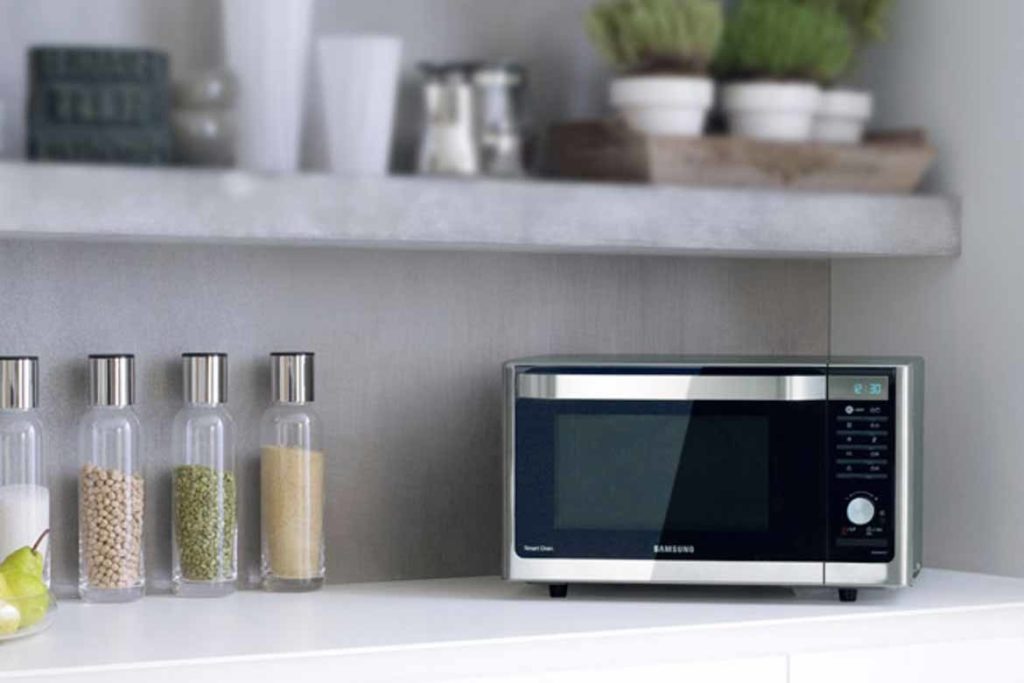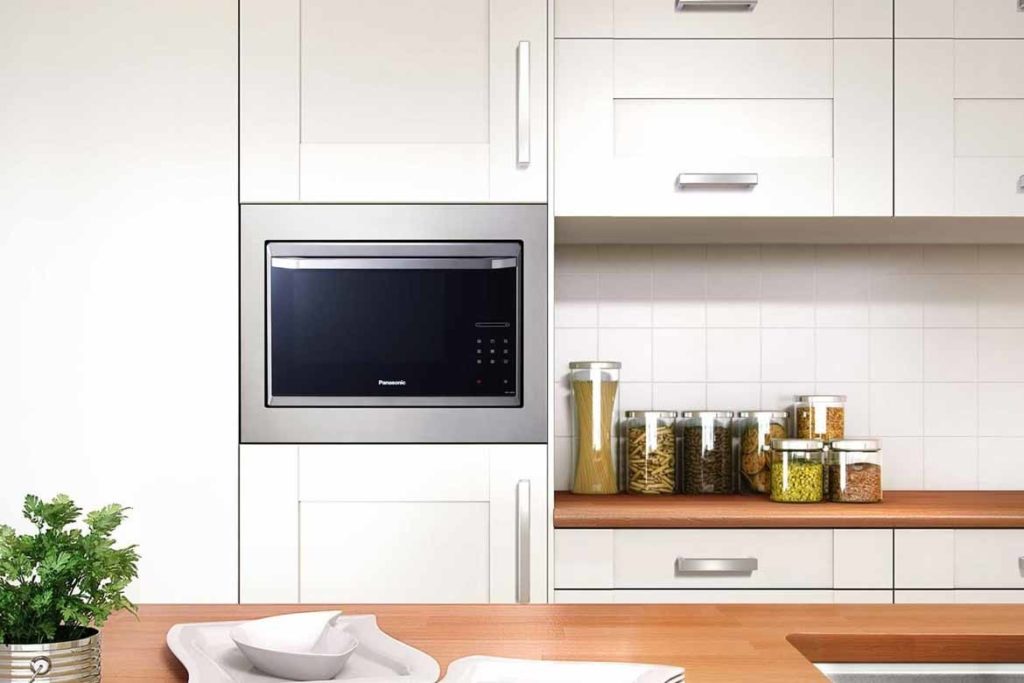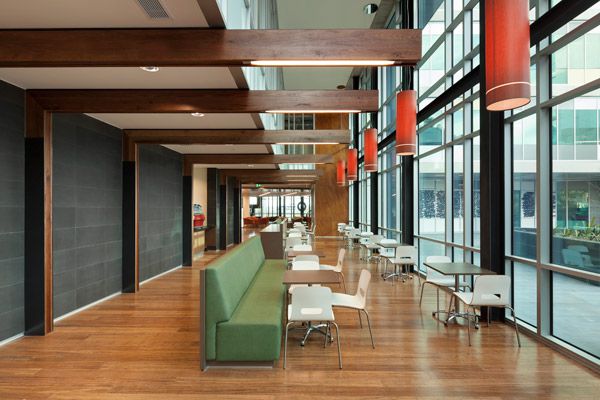What should you look for in a microwave oven? An overview of everything you need to know before purchasing a microwave in Australia.

November 4th, 2022
The dimensions of the average Australian microwave are 50cm (width) x 30cm (height) x 40cm (depth). Large microwaves may have a width of anywhere between 53cm-63cm, and small microwaves can have a width as small as 38cm. The microwave dimensions alone are not the only measurements to consider; all microwaves require at least 10cm of space around each side for ventilation, and a minimum 20cm of empty space above the microwave roof due to the vents.
On average, Australian microwaves are actually a bit smaller than their overseas counterparts. In cm, the average microwave size in America is 76cm (width) x 43cm (height) 45cm (depth). The same is true for UK microwaves, which usually measure in at a 60cm (width) with a depth of anywhere between 45cm-60cm. The average overseas microwave would be considered quite large in Australia.
A ‘microwave’ is a type of oven which heats food using a form of electromagnetic radiation (aka microwaves). These microwaves are reflected by the metal of the oven and absorbed into the food, causing it to vibrate. This vibration creates friction, resulting in the heat that cooks the food. Over time, the word ‘microwave’ came to be synonymous with ‘microwave oven,’ though microwaves are of course the method of cooking rather than the instrument.
Microwave ovens are a huge part of modern life. They have a huge variety of applications in the kitchen and have revolutionised the way that we approach cooking today. The most common use of a microwave oven is to reheat food, usually leftovers. They can also be used to help defrost frozen items and even cook certain meals or ingredients such as pasta. You can also use a microwave to heat water in a clutch if you do not have a kettle.
There is no one standard microwave cabinet size Australia, but all microwaves must have at least ten centimeters of space between the cabinet and each microwave wall. The top of the microwave needs at least 20cm to allow for proper ventilation.
If you do not give the microwave enough space, it runs the risk of overheating and causing a fire. This means that the choosing the proper cupboards and cabinet sizes are crucial to designing a functional kitchen. The appropriate cabinet dimensions will depend on the type and size of your microwave.
There are many different types of microwaves on the market. Each one has a different set of standard dimensions, sizes and uses. There are also the small variations such as wattage (1000, 1100, etc) which can make a big difference in the way that your microwave operates. To help inform your purchase, here is an buying guide to the best microwaves for sale in Australia.

Being able to reheat food on the go is an awesome opportunity. Many jobs do not have proper break rooms with access to a microwave. This nifty lunchbox is a great way to ensure you can still have a hot homemade meal at work – and save money on purchasing a hot lunch somewhere else.
It is also a great idea for schoolchildren, who often don’t get access to a microwave for their lunch and have to instead pack cold food. You can purchase this mini microwave for car here from Amazon for $34.95. It is also great for travel and camping.

Most microwaves will have a capacity between 17L-32L. Compact microwaves are the smallest microwaves you can purchase. Standard dimensions for a compact microwave are around 38cm (width) x 25cm (height) x 13cm (closed door depth).
There are a number of benefits that come with the small size of a compact microwave oven. For one thing, it frees up a lot of countertop space. This means you can fill your kitchen with other appliances as you wish. Compact microwaves are also more likely to fit inside your kitchen cupboards, because they require less space and can be easily tucked away when not in use. They are also easier to clean and much more energy efficient. Browse the Harvey Norman compact microwave oven range now.

Countertop microwave ovens are among the most common type of microwave in Australia. Their dimensions usually in line with the national average of 50cm (width) x 30cm (height) x 40cm (depth). A pro of a countertop oven is that they do not need the extra space around them for ventilation in the same way that a built in oven would, so in practice they require less space. Purchase the microwave pictured above here from the PC Mag.

Trim kits are the way to go when it comes to getting a seamless, built-in look. A trim kit is essentially a frame that goes around the microwave which helps it blend into the cupboards. Trim kits are important because they provide the proper ventilation. Microwave trim kit sizes come in all manner of dimensions, and many microwaves will have a trim kit option (or included). Purchase the trim kit pictured above here.

Combination ovens can give you the convenience of microwaves and the power of convection. The 44L built-in combination microwave and oven pictured above provides the perfect appliance for all of your kitchen needs, from reheating leftovers or cooking popcorn to roasting a whole chicken. At 60cm wide, 46cm high and 57cm deep, it is one of the largest microwaves you will find in Australia. Purchase it here from Appliances online.
A searchable and comprehensive guide for specifying leading products and their suppliers
Keep up to date with the latest and greatest from our industry BFF's!

BLANCO launches their latest finish for a sleek kitchen feel.

XTRA celebrates the distinctive and unexpected work of Magis in their Singapore showroom.

In this white paper, Havwoods outlines the extent to which the buildings we live, play and work affect our health and well-being.

The Olivia Newton-John Cancer and Wellness Centre (ONJCWC) is a marvellous example of cognitive architecture for enhancing wellness, as Dr. Nicola Davies discovers.
In September, design firms from 10 nations will battle it out for the winning title in the first Aeron Hockey Pan Asia Championships.

A science educator, a parliamentary science champion, an international force for tackling climate change, solar panel innovators and computer science advocates are among the game-changing group of Fellows elected this year to the Australian Academy of Technological Sciences and Engineering (ATSE).
The internet never sleeps! Here's the stuff you might have missed

Diagonal is a publication by the Design Institute of Australia, where all proceeds go towards supporting their mission to advance Australian design excellence.

Investigating the process of a Reflective Industry Practice Model PhD Architecture and Design at RMIT University, we discover just what is involved and how the course influences those who participate.